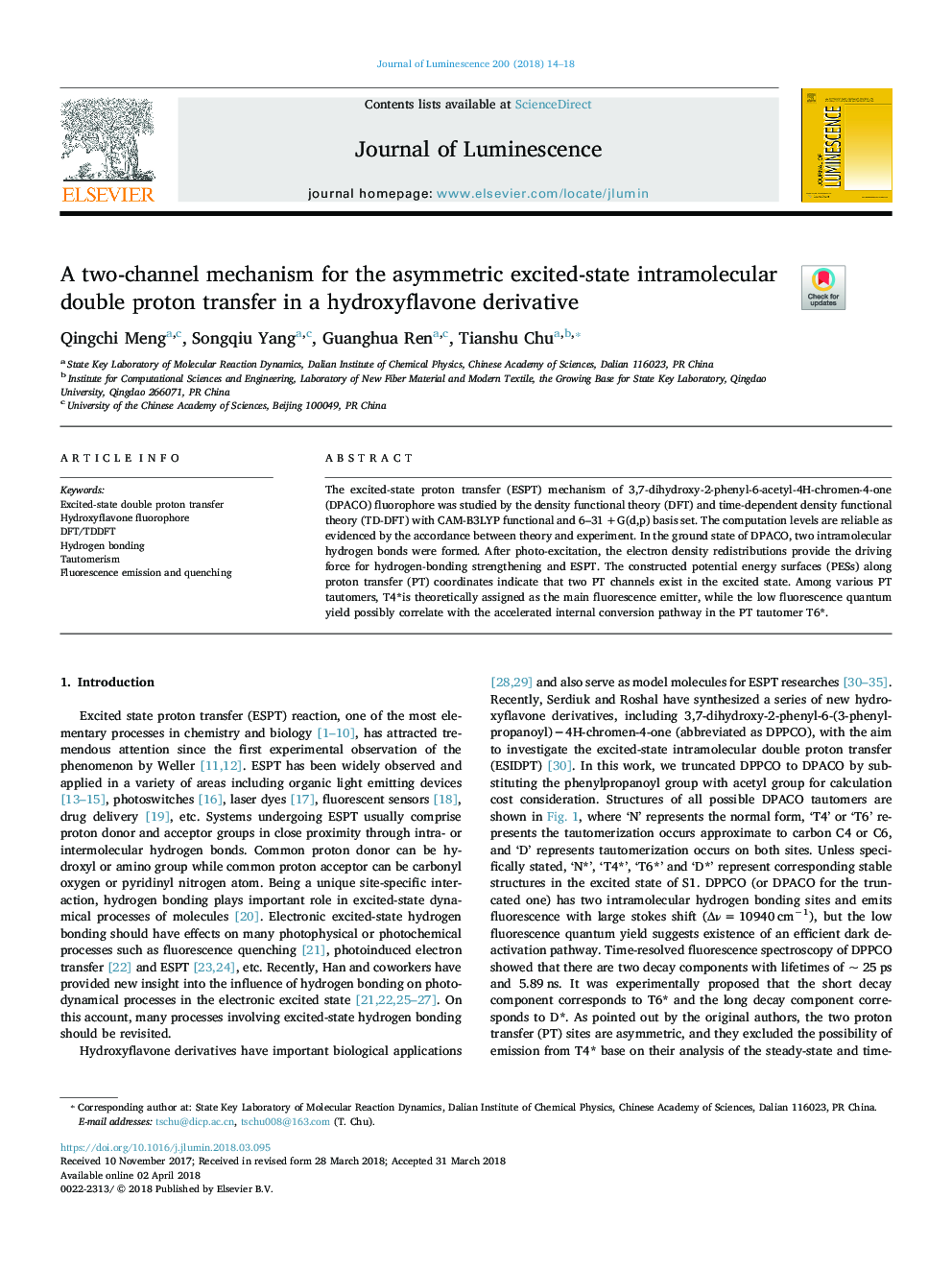| Article ID | Journal | Published Year | Pages | File Type |
|---|---|---|---|---|
| 7839915 | Journal of Luminescence | 2018 | 5 Pages |
Abstract
The excited-state proton transfer (ESPT) mechanism of 3,7-dihydroxy-2-phenyl-6-acetyl-4H-chromen-4-one (DPACO) fluorophore was studied by the density functional theory (DFT) and time-dependent density functional theory (TD-DFT) with CAM-B3LYP functional and 6-31â¯+G(d,p) basis set. The computation levels are reliable as evidenced by the accordance between theory and experiment. In the ground state of DPACO, two intramolecular hydrogen bonds were formed. After photo-excitation, the electron density redistributions provide the driving force for hydrogen-bonding strengthening and ESPT. The constructed potential energy surfaces (PESs) along proton transfer (PT) coordinates indicate that two PT channels exist in the excited state. Among various PT tautomers, T4*is theoretically assigned as the main fluorescence emitter, while the low fluorescence quantum yield possibly correlate with the accelerated internal conversion pathway in the PT tautomer T6*.
Keywords
Related Topics
Physical Sciences and Engineering
Chemistry
Physical and Theoretical Chemistry
Authors
Qingchi Meng, Songqiu Yang, Guanghua Ren, Tianshu Chu,
